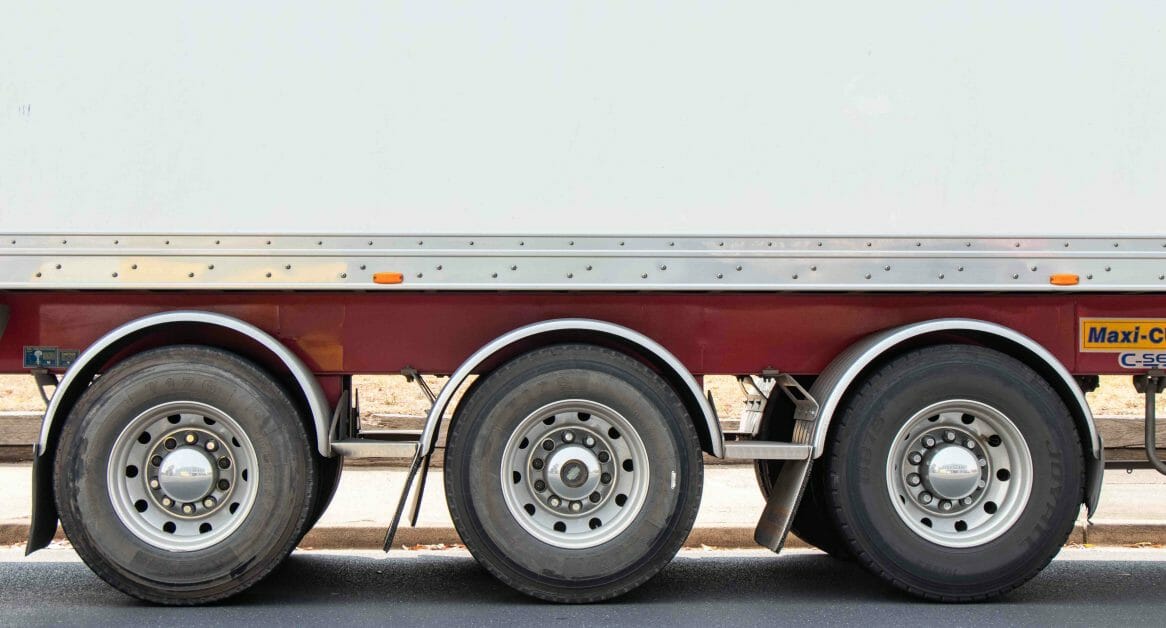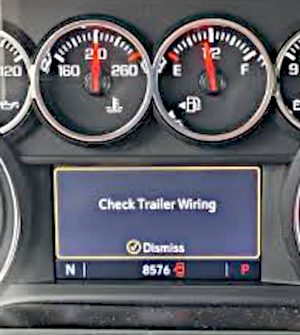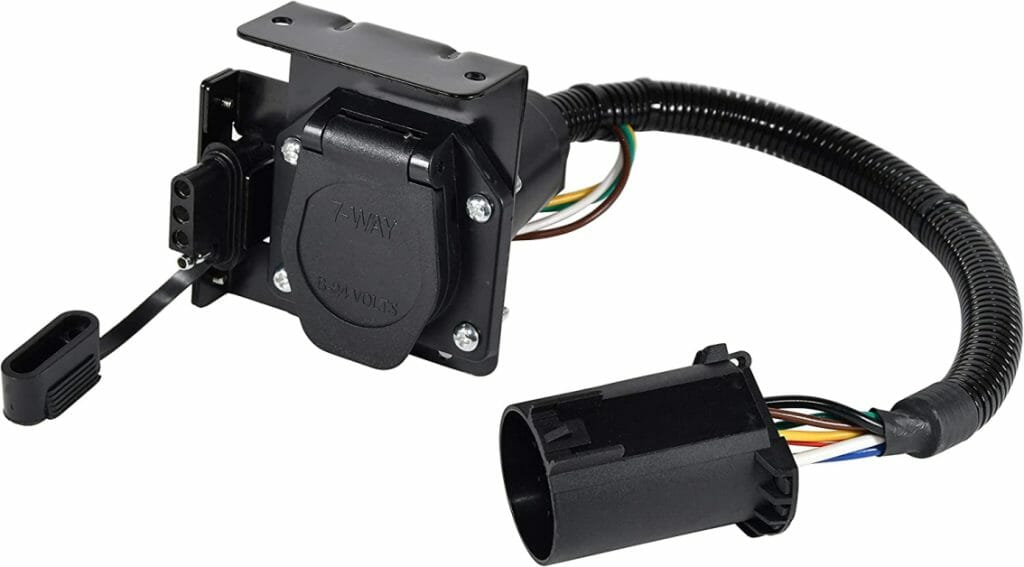Check Trailer Wiring (Issues and Solutions)

Are you getting a “Check Trailer Wiring” or another similar message on your truck’s Driver Information Center (DIC) randomly and frequently? Let’s see if I can help you diagnose it.
Finding the cause of the error message related to your trailer wiring can be difficult. You may have tried several things but still not located the cause, and the message reappears.

There are several possible reasons and also solutions (see table below). It could be the trailer plug, wiring, connectors, trailer brake fuse, breakaway switch pin, the ground connection, or near the brake drum. There are solutions for every possible cause once you know where to look.
| Possible Cause or Reason | Solutions to Try (if applicable) |
| Trailer plug | Secure the wires to the pins. Clean the contacts with a wire brush. Secure the wires in place. Change the plug. |
| Trailer wiring | Replace broken wires. |
| Electrical connectors | Clean corroded points. Reset connectors securely. |
| Trailer brake fuse | Replace the blown fuse. |
| Breakaway switch pin | Replace the switch pin. |
| Ground connection | Change the ground. Replace the ground wire. |
| Brake drum clips | Replace the damaged magnet. Replace damaged wiring. |
Here, I’ve mentioned some common reasons why trailer wiring may not work and will offer you some solutions in more detail.
Possible Causes and Recommended Solutions
Check the Trailer Plug
Check the plug in the trailer. If the contacts appear weak, use a wire brush to clean them. If they are not securely attached to the pins, secure them properly. Try replacing it with a better brand-name model if it’s a cheap plug.
If you have a 7-way and 4-way combo plug, as in newer GM trailer models, it might be the reason for the problem if the 7-way is on the top. Although you may find this combo arrangement convenient, and the combo plugs attach well to the bumper, it only works well if the 7-way plug is on the bottom and the 4-way plug is on the top.

When the 7-way part is normally oriented, the trailer brake and ground connectors are the two bottom terminals. The problem is that the two wires connected here dangle and are not secure and can easily lose contact and reconnect. You should check this plug if you see intermittent warnings about the trailer wire being disconnected and reconnected. Try tapping the plug to confirm if the message still appears on the DIC.
If this is the case, the solution is strengthening and securing the wiring attached via the bottom of the 7-way plug. Use electrical insulation tape and zip ties if necessary. Alternatively, you can replace it with a blade style or Pollak trailer-side connector, such as a Pollak 12-706 plug.
Inspect the Wiring
Inspect the trailer-side wiring and the wiring outside the trailer conduit. Trace the wires to check for any breaks in them.
Check the Connectors
Check all termination points on the electrical connectors under the bed. If they are corroded, clean them with sandpaper and put some dielectric grease on them, or replace them if there is too much corrosion.
Reset the connectors securely. You can use a zip tie to make them secure.
Check the Trailer Break Fuse
Check the trailer brake fuse located under the hood. If it is blown, it must be replaced.
Check the Breakaway Switch Pin
Check the breakaway switch pin.
Change the Ground
Try changing the ground from the battery to ensure good contact with the trailer’s frame. Using a dedicated ground rather than a shared one may be better. If the ground wire or ball is too light, replace it with one that has a larger diameter gauge.
Check the Brake Drum Clips
Check the clips on the emergency brake drum in the rear. If the magnet is damaged, replace it, and if the wiring is twisted or damaged, pull it out and replace it, ensuring a secure direct connection.
Even if only one, two, or three of the four trailer brakes are functioning, you might not get a “Check Trailer Wiring” DIC message. In other words, the lack of this indicator does not necessarily mean everything is working properly, or the message might be intermittent.
Are You Still Seeing an Error Message?
If you’re still finding it difficult to locate the cause of the problem, have someone sit inside the truck to check the trailer indicator as you move each part of the entire circuit around.
If you notice the error message only appears while moving a particular part or component, you will know that you’re getting close to locating the exact spot where the problem is. Once identified, read the section above about that particular part.
Take a look at some of our related articles below.
